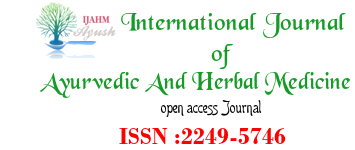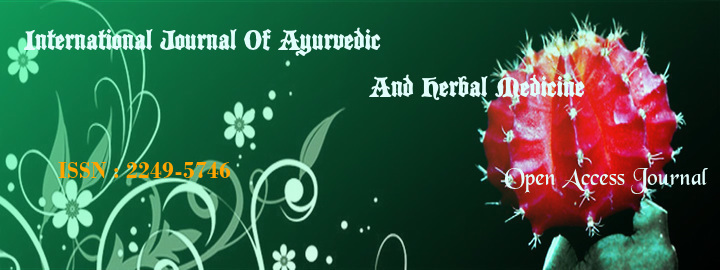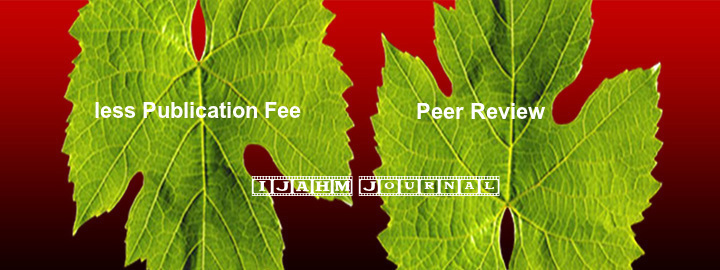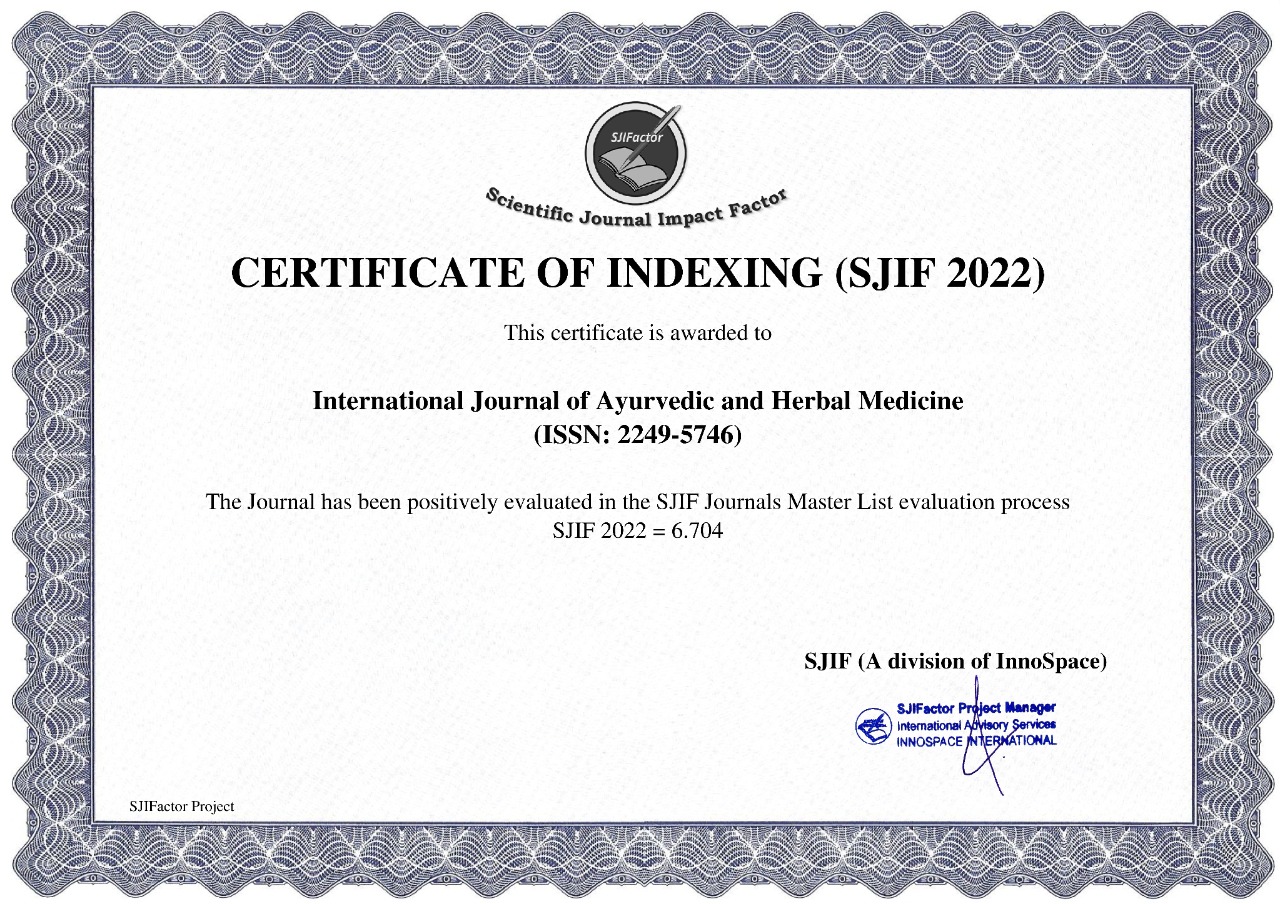


1Nitesh Kumar, 2Monika Thakur, 3Surendra Kumar Godara, 4Rakhi Gangotia , 5Priya Kumari
DOI : http://dx.doi.org/10.31142/ijahm/v10i4.04
1Department of Botany, Govt. Degree College Sujanpur Tihra, Hamirpur, Himachal Pradesh
2Department of Botany, Government degree college Sarkaghat,Mandi (H.P).
3Assistant Registrar, MGSU, Bikaner, Rajasthan.
4Department of Botany, Gautam college Hamirpur (H.P).
5Department of bioscience,H.PU Shimla
ABSTRACT:
Plants plays important role in the life cycle of the rural people of Bilaspur district. They are helpful to the rural communities to meet their daily requirement such as food, fodder, fiber, shelter, ornamental ,medicinal and used in various religious ceremonies and also associated with various deities and their worshipping. Every region has its own sacred plants .The sacred plants has important place in the Indian mythology and thus these plants play an important role in the life of rural people of study region from birth to death in every ceremonies. Bilaspur district is the beautiful district of Himachal Pradesh. This district is also known for famous temple such as Baba Nahar Singh temple, Naina Devi temple,Rishi Markandey temple and Rukmani kund and temple etc. The plants grown in temple courtyard of these temples shows that these plants are sacred and having their religious importance and and their association with deities. Instead of religious importance, this study attempts to highlight the herbal potential or medicinal importance of some plants of Bilaspur district which are worshipped to appease various dieties. The traditional knowledge about the herbal potential of local plants of study area is used by rural communities for primary health care and for treatment of various diseases. This traditional knowledge about religious and medicinal ascepts form the basis of conservation of plants resources for rural community.
Key words: Deities, Folk remedies, Traditional knowledge, Ritual and rites, Bilaspur, Himachal Pradesh
Reference:
- Arora N. K. (2018). Environmental Sustainability-necessary for survival. Environmental Sustainability 1, 1-2.
- Chander H. and Chandel V. C. (2019). An Enumeration of Lichens from Bara Bhangal Region of Dhauladhar Wildlife Sanctuary. Asian Journal of Advanced Basic Sciences 7(1), 45-50.
- Chander H. and Kumar G. (2018a). Rain-Water Harvesting Structures as an Alternative Water Resource under Rain-Fed Conditions of District Hamirpur, Himachal Pradesh, India. CPUH-Research Journal 3(2), 226-233.
- Chander H. and Kumar G. (2018b). Rain-Water Harvesting Structures as an Alternative Water Resource under Rain-Fed Conditions of District Hamirpur, Himachal Pradesh, India. CPUH-Research Journal, 3(2): 226-233.
- Chander H. and Pathania J. (2018). Notes on Occurrence of Anti HIV-1 Medicinal Macrofungi Tyromyces chioneus in Hamirpur district, Himachal Pradesh. CPUH-Research Journal, 3(2), 187-190.
- Chander H. and Sharma G. (2020). Some rare ethno-medicinal plants of lower foot hills of North-Western Himalaya in Himachal Pradesh. In: Ethnobotany and Conservation. Pant S., Sharma A. and Sharma V. (eds.). Indu Book Service Private Limited, New Delhi. 123-143.
- Chander H., Choudhary N. and Sharma P. (2017a). Taxonomic and Ethnobotanical Notes on Some Ferns and Fern Allies of Hamirpur (H.P.), North-Western Himalaya. J. Biol. Chem. Chron. 3(1), 28-40.
- Choyaland Kumar N. (2015). Ethnobotanical notes on some magico-religious plants of Himachal Pradesh in the book “ Ethnobotanty- A recent approach” Published madhu Publication, Bikaner, Rajasthan India: 155-171.
- Chander H., Devi K. and Dogra, A. (2017b). Preliminary investigations on diversity of wood rot fungi in Hamirpur district, Himachal Pradesh. Biol. Chem. Chron. 3(2), 10-14.
- Chander H., Kumari R. and Sharma S. (2018). Diversity, Distribution and Prioritization of Fodder Species for Conservation in Hamirpur District, Himachal Pradesh. CPUH-Research Journal, 3(2), 124-131.
- Chander H., Sapna, Deepika and Sanjna (2019). Species Diversity of Lichens in Balh Valley of Himachal Pradesh, North Western Himalaya. Journal of Biological and Chemical Chronicles 5(2), 32-40.
- Chander H., Thakur S. and Sharma S. (2017c). Investigations on Diversity of Wood Inhabiting Fungi in Sarkaghat Region of District Mandi, Himachal Pradesh, North-Western Himalaya. J. Biol. Chem. Chron. 3(1), 41-54. Kaur I.,Sharma S.and Lal S.(2011). Ethnobotical Survey of medicinal plants used for different diseases in Mandi district of Himachal Pradesh.International Journal of Research in Pharmacy and chemistry 1(4):1167-1171
- Kandari L. S., Bisht V. K., Bhardwaj M. and Thakur A. K. (2014). “Conservation and management of sacred groves, myths and beliefs of tribal communities: a case study from north-India. Environmental Systems Research 3,16.
- Kumar G. and Chander H. (2017a). A Study on the Potential of Azolla pinnata as Livestock Feed Supplement for Climate Change Adaptation and Mitigation. Asian J. Adv. Basic Sci. 5(2), 65-68.
- Kumar G. and Chander H. (2017b). Documentation of Indigenous Agricultural Implements, Practices and other Conservation Techniques in Subtropical Climatic Zone of Shivalik Hills, North Western Himalayas. Biol. Chem. Chron. 3(2), 15-23.
- Kumar G. and Chander H. (2018a). Ethno-Veterinary and Fodder Plants of Awah-Devi Region of Hamirpur District, Himachal Pradesh. Biol. Chem. Chron., 4(1), 8-15.
- Kumar N.,Godara S., Ram.S., Pathania R.and Bhoria R. (2020) .Role of ethinic and indigenous people of North-Western Himalayan region of Himachal Pradesh in the conservation of Phyto-diversity through religious and magico-religious beliefs. . IJCRT.8(7), 1846-55.
- Kumar G. and Chander H. (2018d). Poly-lined Water Harvesting Tank Technique to Mitigate the Impact of Climate Change on Agro-economy in Rain Fed Conditions: A Case Study. Biol. Chem. Chron., 4(1), 1-7.
- Kumar G. and Chander H. (2019). Traditional Usage of Ethno-medicinal Plants of Sikandra Hill Range in Mandi District of Himachal Pradesh, India. Asian Journal of Advanced Basic Sciences 7(2): 42-49.
- Kumar N. and Choyal R. (2013). Ethno-Medicinal Uses of Some Plants of Lower Foot Hills of Himachal Pradesh for the Treatment of Oral Health Problems and Other Mouth Disorders. International Journal of Advanced Research 1(5), 1-7.
- Kumar S. (2009). Religious Practices among Indian Hindus: Does that Influence Their Political Choices. Japanese Journal of Political Science 10(3), 313-332.
- Maikhuri R. K. (2013). Biodiversity of Indian West Himalayas. The Himalayan Biodiversity 24-25.
- Padma T. V. (2014). Himalayan Plants Seek Cooler Climes. Nature 512, 359.
- Pathania J. and Chander H. (2018a). Notes on Some Common Macrofungi of Hamirpur Region, Himachal Pradesh. CPUH-Research Journal, 3(2), 191-201.
- Pathania J. and Chander H. (2018b). Nutritional Qualities and Host Specificity of Most Common Edible Macrofungi of Hamirpur District, Himachal Pradesh. Chem. Chron. 4(2), 86-89.
- Prasher I. B. and Chander H. (2005). Lichens of Himachal Pradesh – I. Univ. Res. J. (Sci.) 55, 109-129.
- Ray R. and Ramachandra T. V. (2010). Small sacred groves in local landscape: are they really worthy for conservation?. Current Science 98(9), 1178–1180.
- Sharma J. and Devi, A. (2015). Study on traditional worshiping plants in Hindu religion from Nalbari and Sonitpur Districts of Assam. International Journal of scientific and research publications 5(5), 1-5.
- Sharma R.and Seth M.K (2020). Role of rural women in the conservation of plant resources and it's management in district Mandi, Himachal Pradesh.IJCRT., 8(5), 1493-1501
- Sood S.K, Thakur Vandana and Lakhanpal T.N.(2005) Secred and magico religious plant of India. Book Published by Scientific Publisher Jodhpur,India. 1-231.
- Sen Sharma, T. (1989). Plant in the Indian Puranas- An Ethnobotanical investigation. Naya Prakash, Calcutta.
- Warman, C.K. (1999). Trees of india. (Medicinal, Commercinal, Religious and Ornamental).CBS Publishers and Distributors. Darya Ganj, New Delhi, India.
index






















